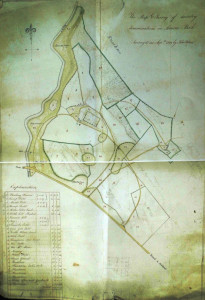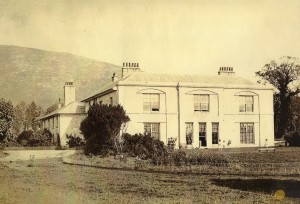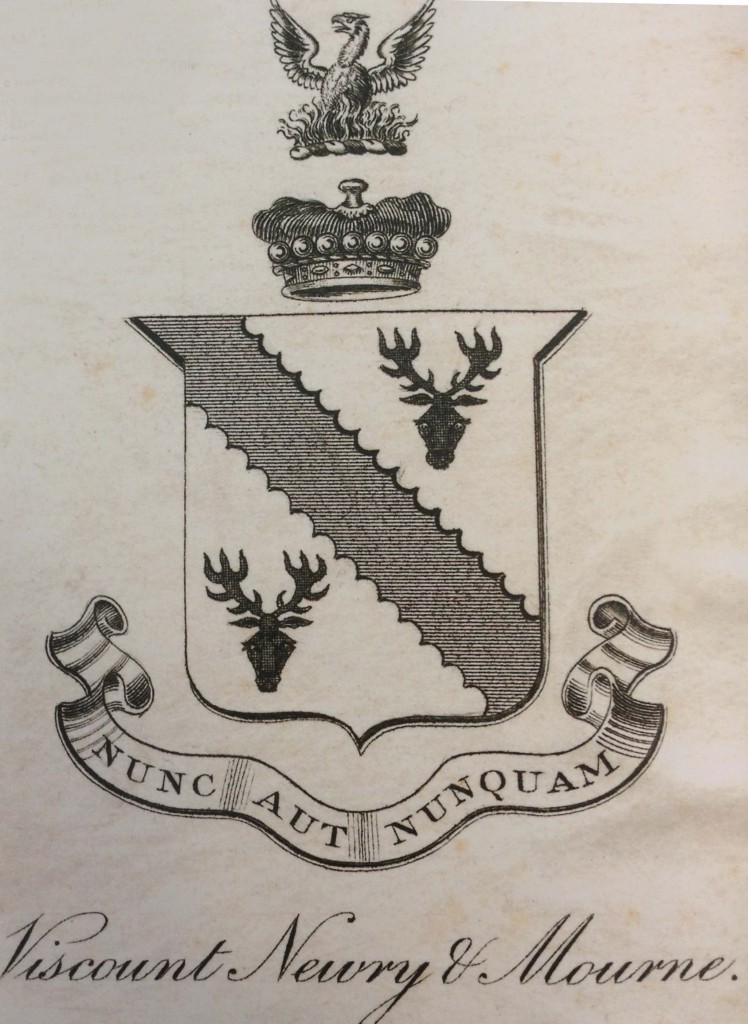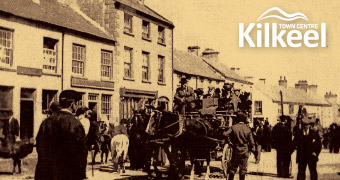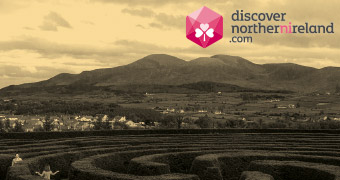In 1860 a valuation and report was commissioned to evaluate the condition, managment and profitabilty of the Newry and Mourne Estates of Francis Jack Needham, 2nd Earl of Kilmorey.
This report was translated and published through a project between Newry and Mourne Museum and the Centre for the Study of Historic Irish Houses and Estates. The report gives us a unique insight into the state of our locality during the 19th Century.
In 1860 Kilmorey did not occupy the home estates in Newry and Mourne as his father had left it in the hands of three trustees due to the 2nd Earls eccentric characteristics. Kilmorey’s cousin Octavius Newry Knox was entrusted with the task of carrying out the valuation and report. It seems that in the wake of the Great Famine the estate managers were looking to improve and modernise the rental capacity and profitabltiy of the Irish lands.
The Kilmorey property consisted of 38,923 Irish acres, with Mourne making up 31,037 acres. Half of the Mourne estate was mountain with the rest classed as mostly arable. In 1846 the total rental of the Kilmorey lands were estimated at £20,000 (roughly £882,000 today). It had only fallen to £18,930 (roughly £817,018.80 today) by 1860 showing that County Down had not suffered to a massive extent from the extremities of the famine, when compared with the rest of Ireland.
A map of the Mourne Park Demesne surveyed in 1812.
Mourne Park House had fallen into disrepair by 1860 and there was dry rot in several rooms, the water supply was unreliable and the sewage system needed improved. There were 5 cottages on the Mourne Park demesne; 3 houses occupied by William Duncan, John Moore and James Curlett, with James McBurney living in a labourers cottage. They were all in good enough repair.
Mourne Park House. This photo was taken prior to 1892.
There were five main schools on the Mourne Estate; Kilkeel, Annalong, Cargenagh, Attical and Mourne Park. All schools were run in association with the Church Education Society and were well conducted and attended. The Kilmorey Arms Hotel was built by John Shannon in 1843, built of stone and slated with several outbuildings. There was a flax scutching mill in Tullyframe built in 1852 at a cost of £458.
The principal crops of the area were potatoes, flax, oats and wheat. Most of the land was arable but that which was mountainus or boggy could have been improved by a better system of cultivation. The soil was mostly light but there was a presence of clay and loam. Land of better quality was found nearer the sea. One of the main disadvantages of the estate was its distance from Newry town. Knox comments that ‘considerable improvements’ had been made by the tenants over the years and while it is of no great advantage to the landlord, ‘it is satisfactory to find that the condition of the estate is not retrograding.’
For a more detailled insight into the Newry and Mourne Estates of the Kilmoreys see A Report on a 19th Century Estate in South Down, published by Newry and Mourne Museum.
